Salesforce
Salesforce is a leading cloud-based software for customer relationship management (CRM), empowering companies to better connect with leads and established customers alike. GrowthLoop amplifies the power of CRM by allowing you to segment these individuals across any metric in your data warehouse, paving the way for more relevant and targeted campaigns. This article outlines the steps necessary to set up Salesforce as a GrowthLoop destination and begin exporting audiences for activation.
Before connecting Salesforce to the application, we will walk through one requirement:
- Creating a Security Token
Requirements
Create a Security Token
Connecting Salesforce as an audience destination requires a security token specific to your Salesforce account. If you do not know your security token, you will need to reset it using the steps below. If you know your token, skip to Connecting Salesforce as a Destination.
Resetting your Salesforce Security Token
Log in to Salesforce with your username and password. From the home screen, click your User Icon at the top right corner and select Settings.
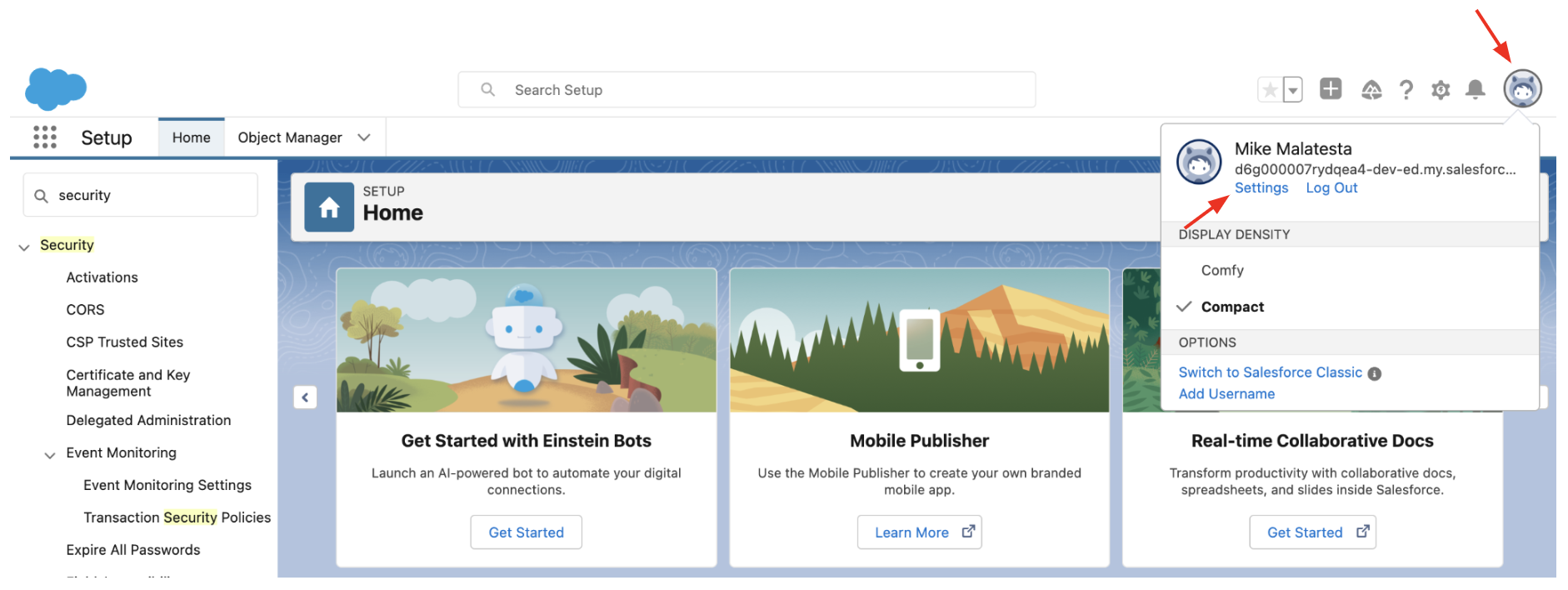
Type “token” into the Quick Find bar in the left rail and click Reset My Security Token.

Click Reset Security Token. A new token will be sent to the email address associated with your Salesforce account.

Once you know your security token, you’re ready to connect Salesforce as an audience destination!
Connecting Salesforce as a Destination
Select Destinations from the left rail of your GrowthLoop home screen.

Click New Destination on the top right.

Scroll down to the CRM section of the pop-up window and click Add Salesforce Audience.

Complete all Destination Info and Credentials fields (see below for assistance), then click Create.
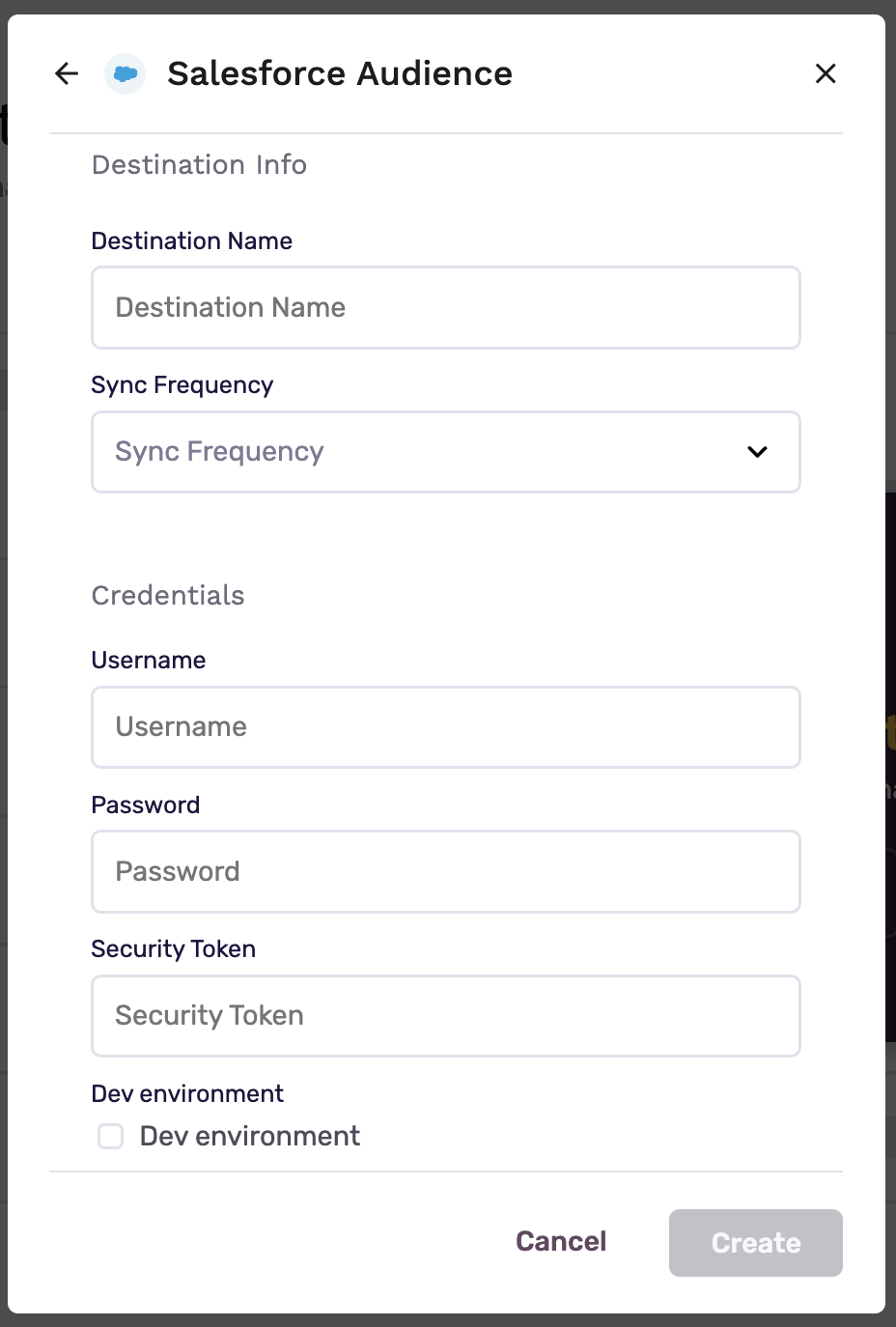
Destination Name: A custom name for your destination.
Sync Frequency: The frequency at which GrowthLoop will export audiences to your destination (hourly or daily).
Username: Your Salesforce username.
Password: Your Salesforce password.
Security Token: Your Salesforce security token.
Dev Environment: Check this box if your Salesforce destination is a sandbox (development) environment. If you aren’t sure, take a look at the Salesforce URL that you use to log in. If this URL begins with “test,” i.e. test.salesforce.com, check the box. If not, leave it empty.
Exporting an Audience to Salesforce
Once you’ve set up Salesforce as a destination and created an audience, you can begin exporting!
Open the target audience and click Export.
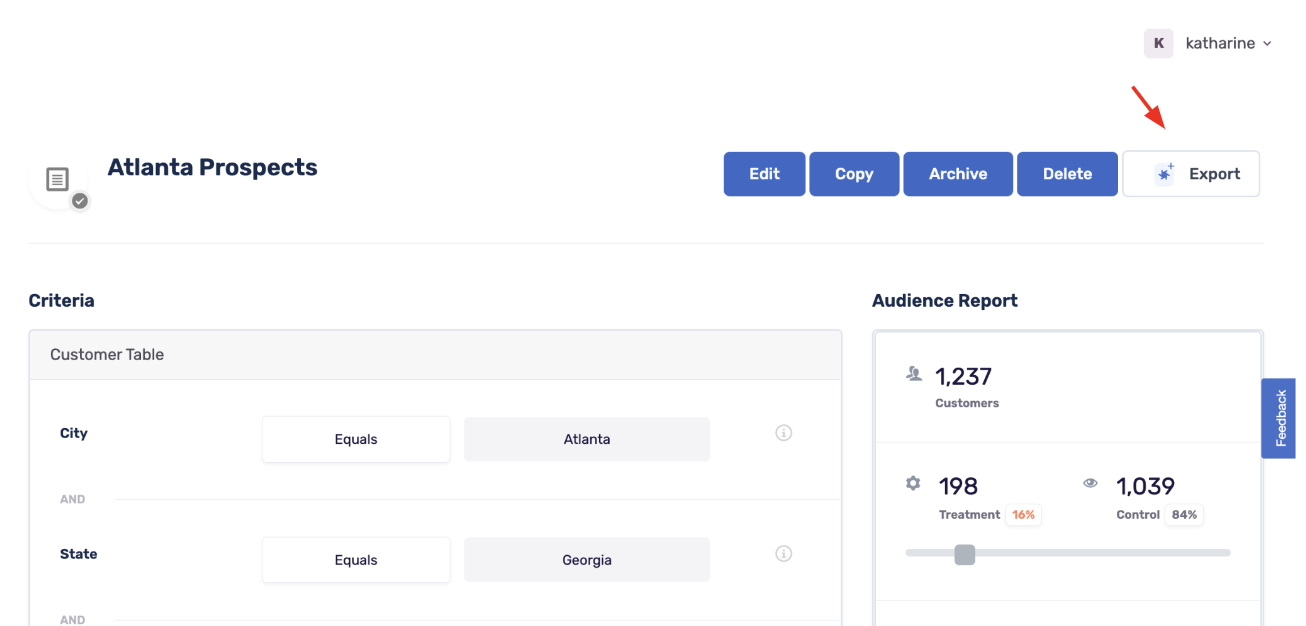
Find your Salesforce destination and click Activate.
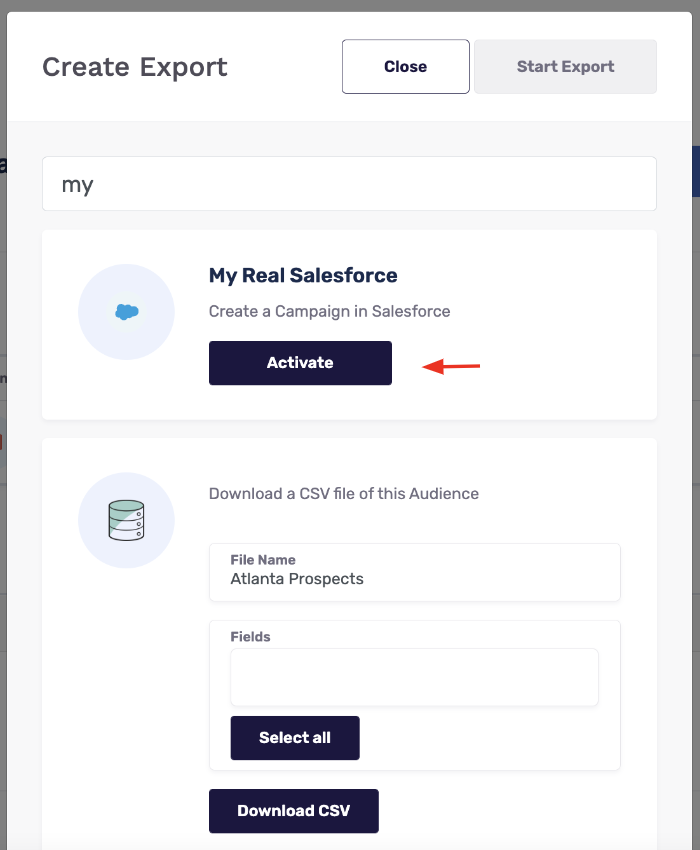
In the modal window, specify how GrowthLoop should match audience members to your Salesforce leads, contacts and accounts. Each match condition unlocks a different set of actions you can apply to matching and non-matching profiles in Salesforce.
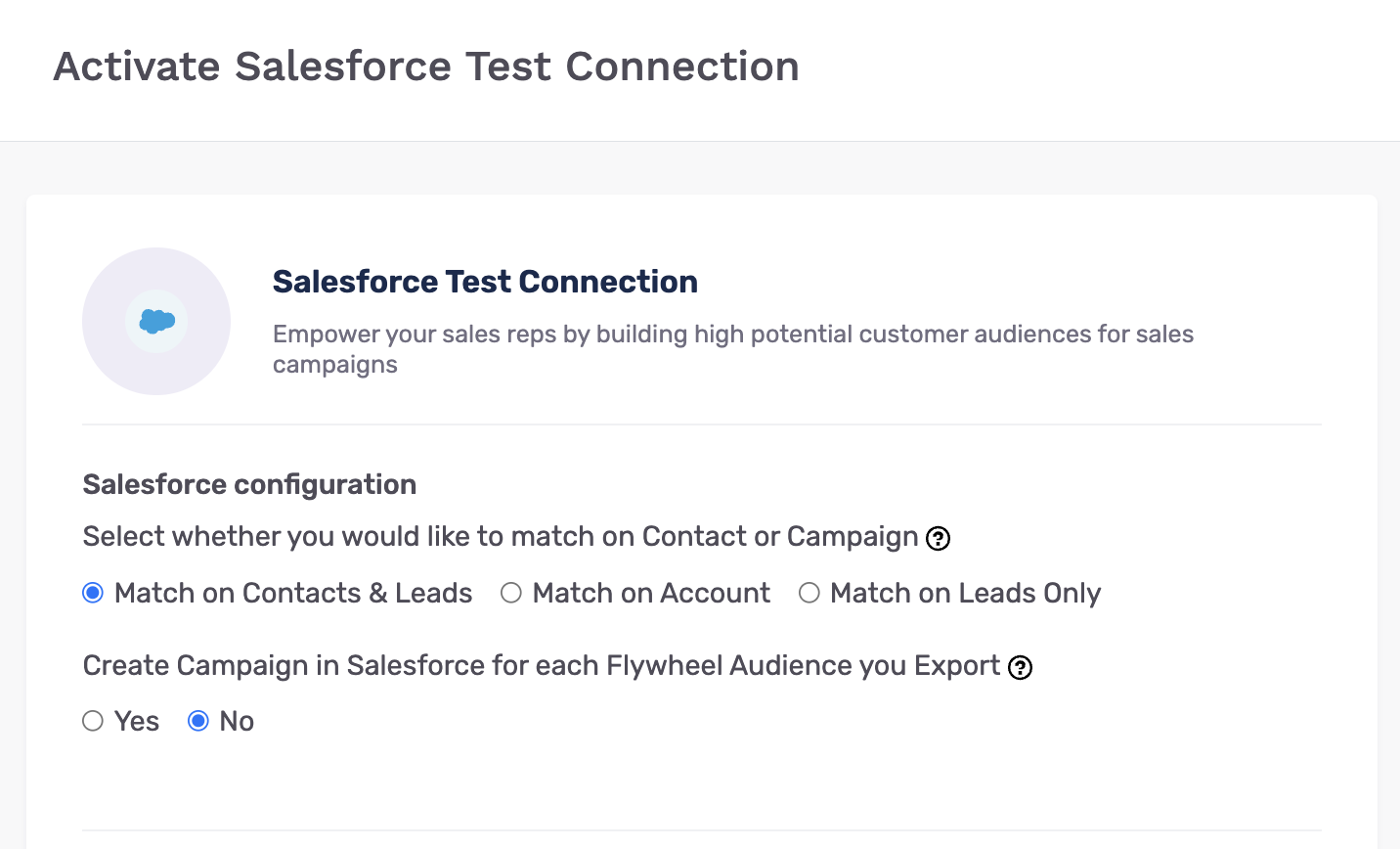
Match on Contacts and Leads: Look for matches across all contacts and leads in Salesforce.
Match on Account: Look for matches with accounts in Salesforce.
Match on Leads Only: Look for matches only with Salesforce leads, ignoring contacts.
Create Campaign in Salesforce for each GrowthLoop Audience: Selecting Yes will create a campaign for this audience in your Salesforce instance. To do so, you must have Marketing User Privileges assigned to your Salesforce username.
Option 1: Match on Contacts and Lead
When matching on contacts and leads, you have an extensive set of options for customizing your audience export to Salesforce.
Matching Contacts
You can filter all contact matches across opportunity type, owner, and stage, applying a specific action to only contacts who meet these criteria. Available actions include adding tasks, opportunities, and activities. You have the option of assigning this action to either the opportunity owner (by checking Copy opportunity owner for this task) or specifying a different owner’s email address.
You can also choose a separate action to apply to matching contacts who do not meet your opportunity criteria.
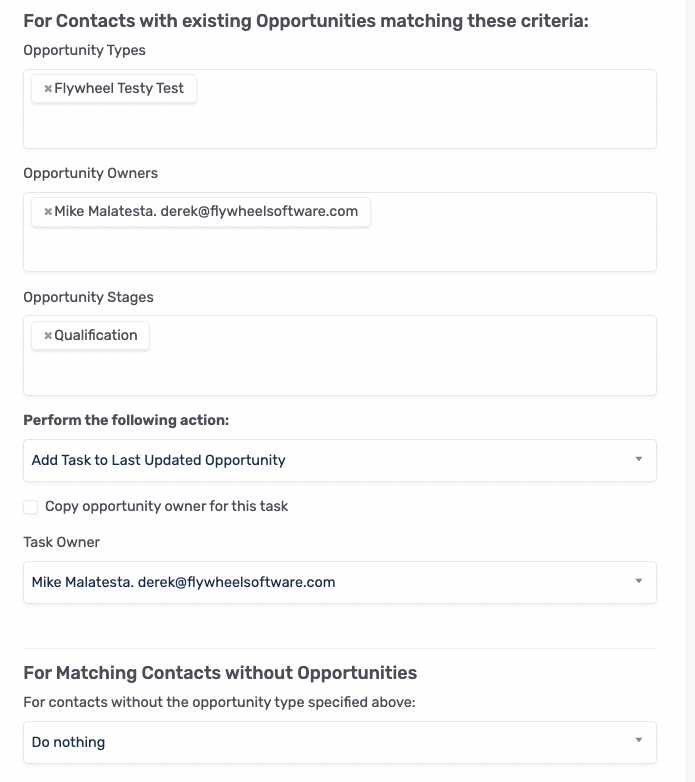
Matching Leads
As with contacts, there are a variety of actions available for matching leads, ranging from updating the lead to converting it to an account and contact.

Non-Matching Contacts or Leads
Finally, you can also take action on any audience member who does not match an existing contact or lead in Salesforce. You can create a new lead or contact (among others) by identifying the fields in your data that correspond with an individual’s company, name and contact information.
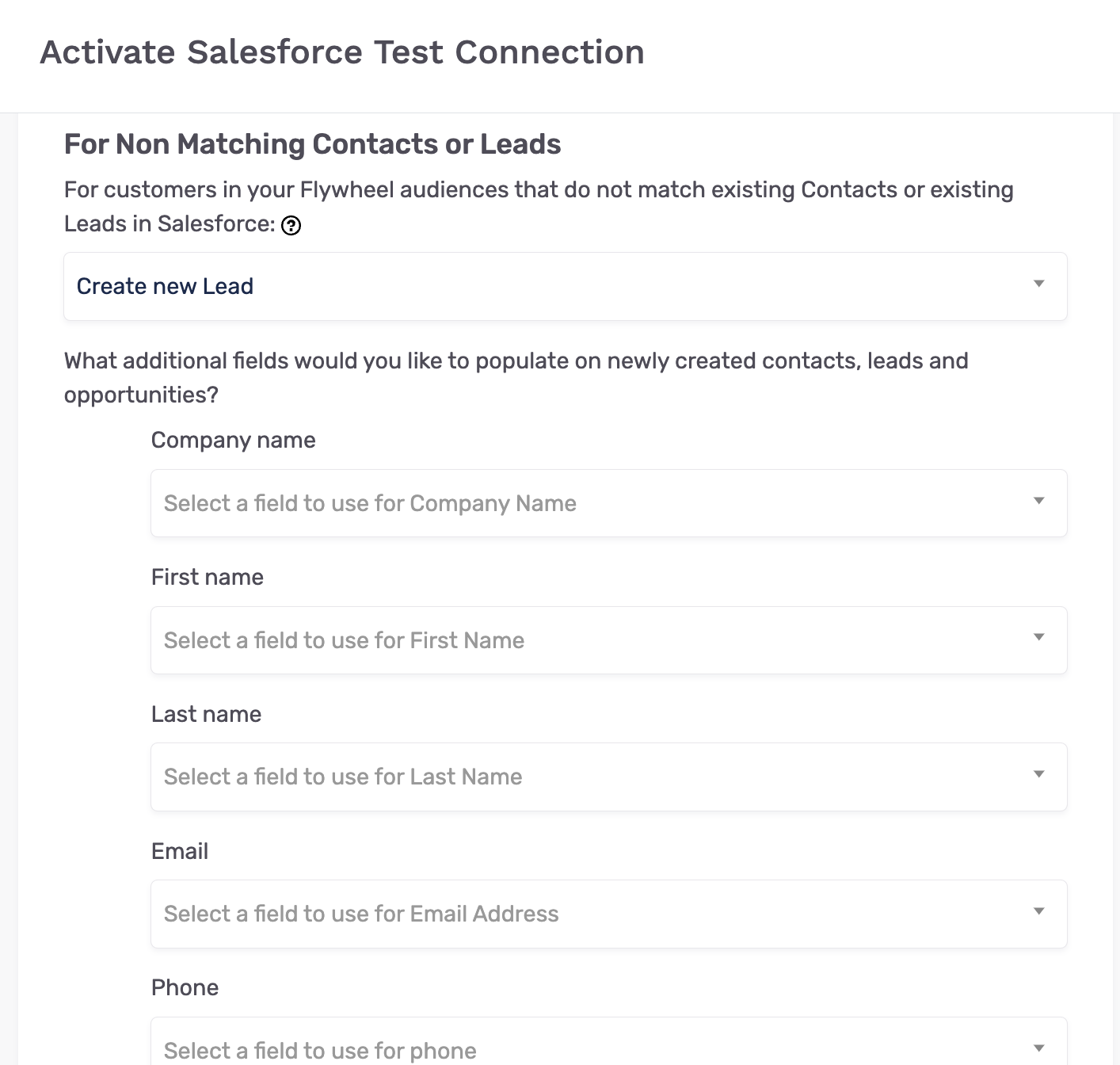
Choosing Match Fields
Finally, choose the data identifier that will match your GrowthLoop audience members to your Salesforce leads and contacts. This is typically a Contact ID or email address.

Option 2: Match on Account
Selecting “Match on Account” allows you to match on Salesforce account, rather than contact or lead. As with contacts and leads, you can apply actions to accounts right from GrowthLoop!
Matching Accounts
You can filter all account matches across opportunity type, owner, and stage, applying a specific action to only accounts that meet these criteria. Available actions include adding tasks, opportunities, and activities. You can assign this action to either the opportunity owner (by checking Copy opportunity owner for this task) or specifying a different owner’s email address.
You can also choose a separate action to apply to any contacts who do not match your criteria.
Option 3: Match on Leads Only
Selecting “Match on Leads Only” allows you to match audience members to Salesforce leads only, ignoring Salesforce contacts.
Matching Leads
For matching leads, you can add a task, convert the lead and create an opportunity, or do nothing.
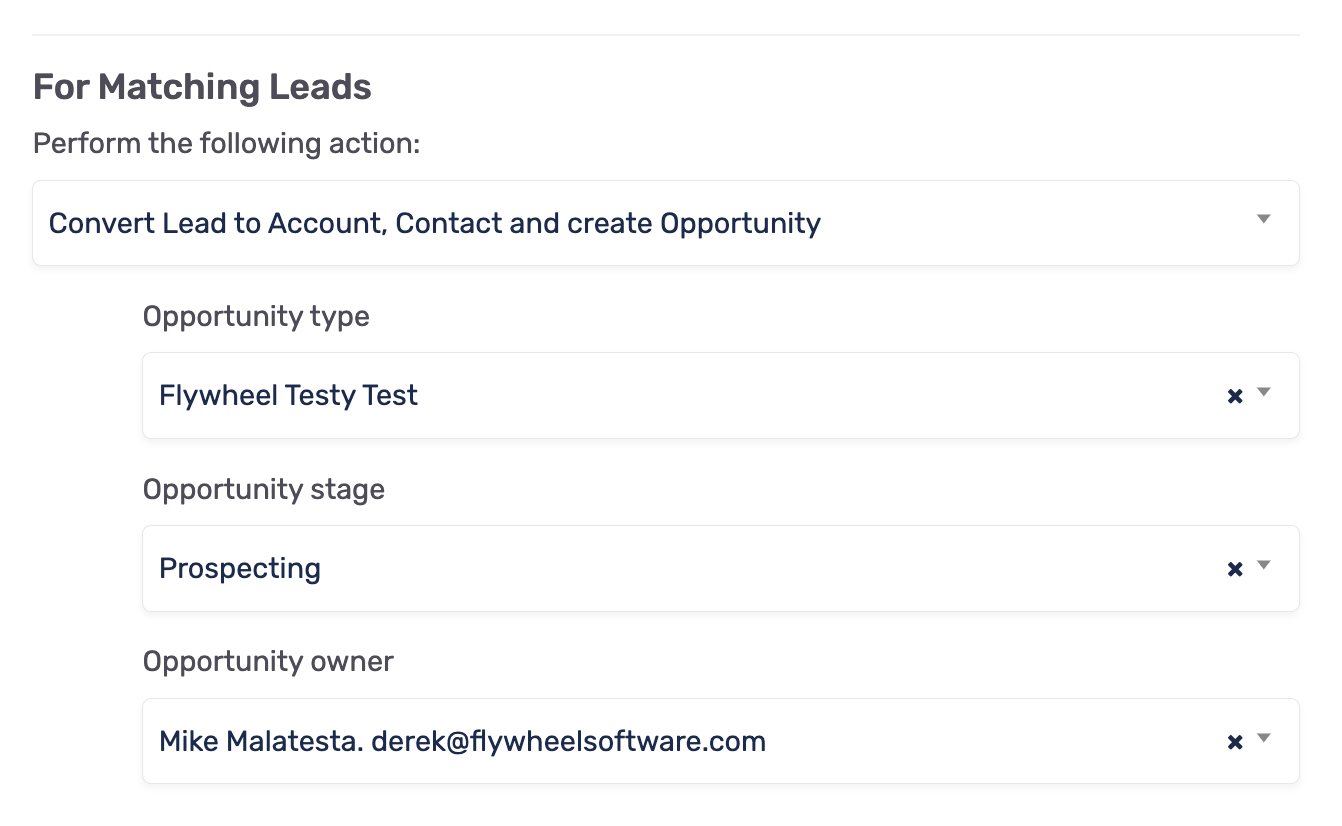
Non-Matching Leads
For audience members that do not match an existing lead, you can create new Salesforce leads or contacts by specifying the fields in your data that correspond with members’ companies, names and contact information.
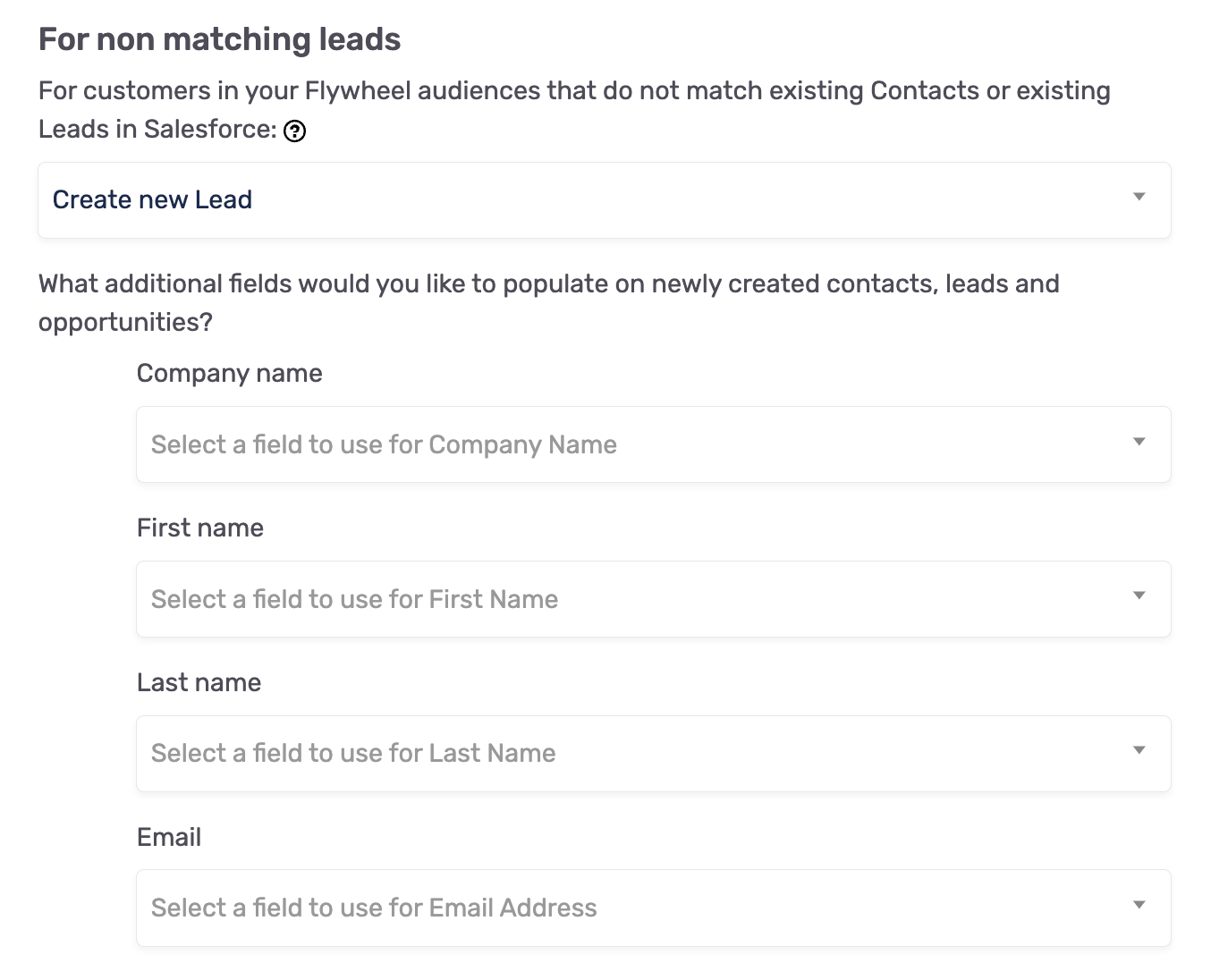
Non-Matching Leads
For audience members that do not match an existing lead, you can create new Salesforce leads or contacts by specifying the fields in your data that correspond with members’ companies, names and contact information.
Updated 7 months ago
